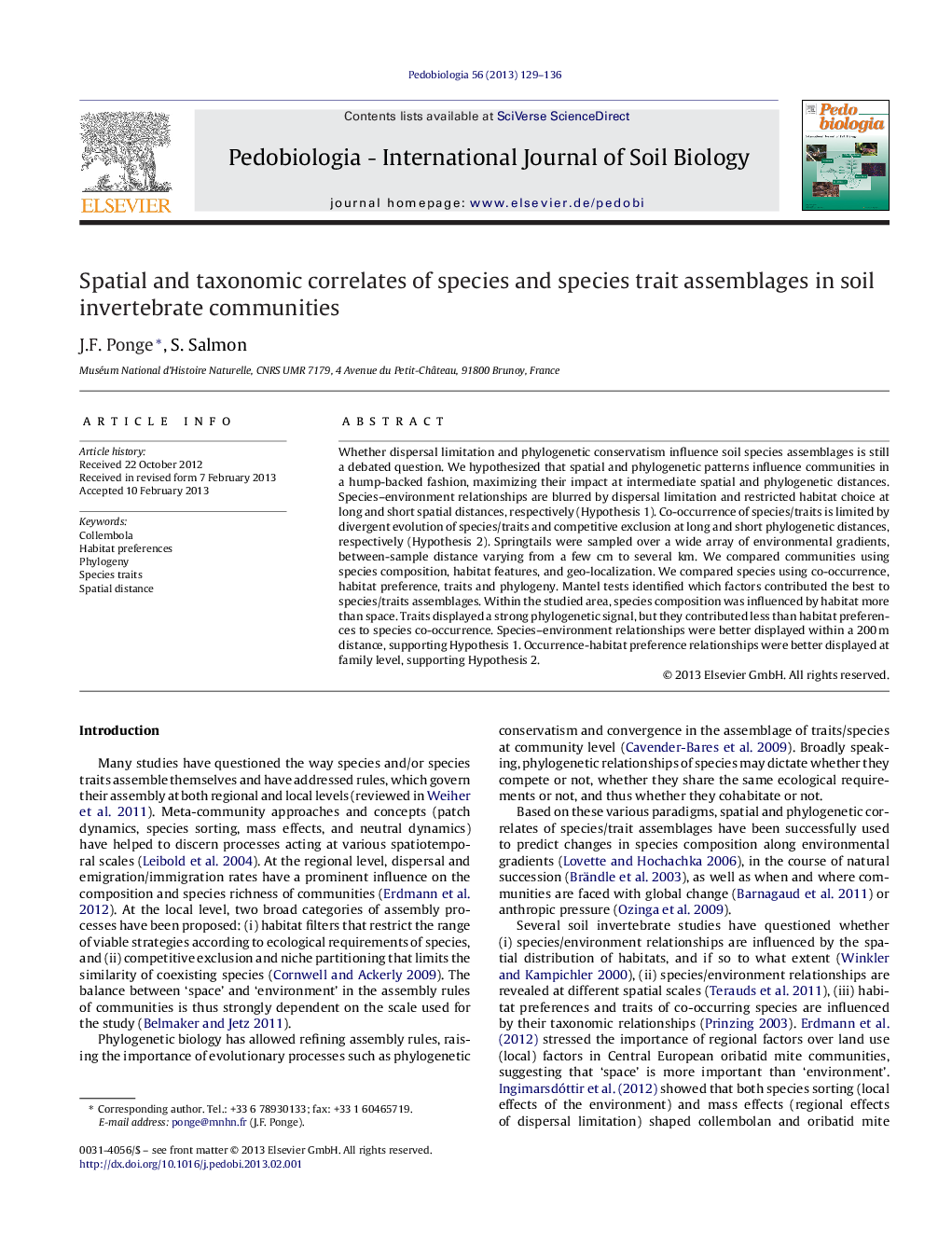| Article ID | Journal | Published Year | Pages | File Type |
|---|---|---|---|---|
| 2061073 | Pedobiologia | 2013 | 8 Pages |
Whether dispersal limitation and phylogenetic conservatism influence soil species assemblages is still a debated question. We hypothesized that spatial and phylogenetic patterns influence communities in a hump-backed fashion, maximizing their impact at intermediate spatial and phylogenetic distances. Species–environment relationships are blurred by dispersal limitation and restricted habitat choice at long and short spatial distances, respectively (Hypothesis 1). Co-occurrence of species/traits is limited by divergent evolution of species/traits and competitive exclusion at long and short phylogenetic distances, respectively (Hypothesis 2). Springtails were sampled over a wide array of environmental gradients, between-sample distance varying from a few cm to several km. We compared communities using species composition, habitat features, and geo-localization. We compared species using co-occurrence, habitat preference, traits and phylogeny. Mantel tests identified which factors contributed the best to species/traits assemblages. Within the studied area, species composition was influenced by habitat more than space. Traits displayed a strong phylogenetic signal, but they contributed less than habitat preferences to species co-occurrence. Species–environment relationships were better displayed within a 200 m distance, supporting Hypothesis 1. Occurrence-habitat preference relationships were better displayed at family level, supporting Hypothesis 2.
